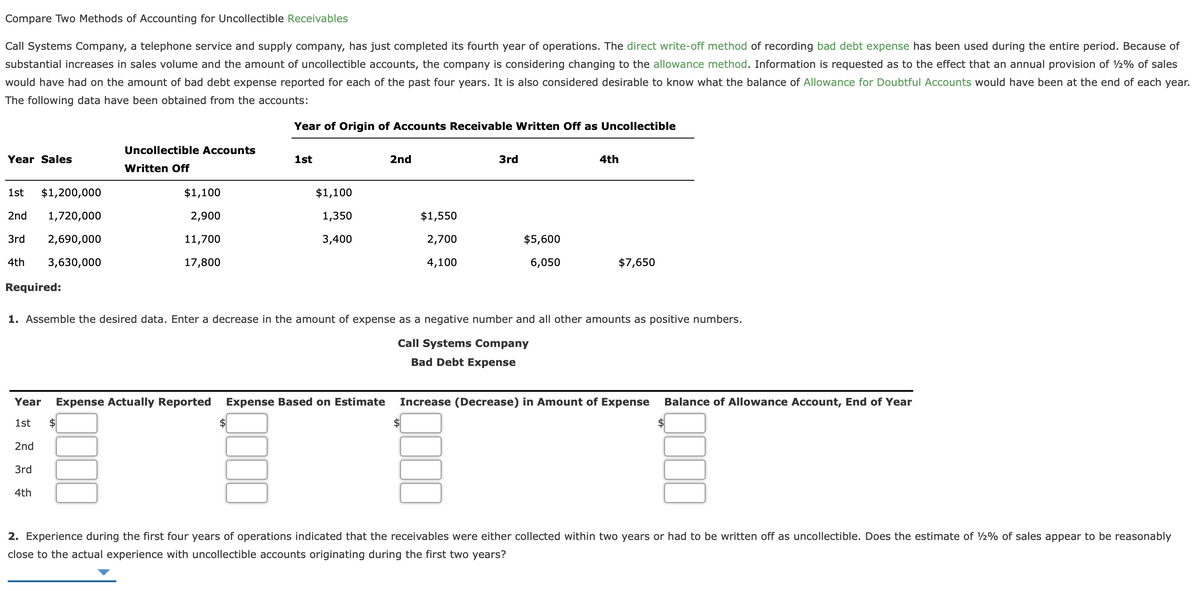ompare Two Methods of Accounting for Uncollectible Receivables all Systems Company, a telephone service and supply company, has just completed its fourth year of operations. The direct write-off method of recording bad debt expense has been used during the entire period. Because of ubstantial increases in sales volume and the amount of uncollectible accounts, the company is considering changing to the allowance method. Information is requested as to the effect that an annual provision of ½% of sales ould have had on the amount of bad debt expense reported for each of the past four years. It is also considered desirable to know what the balance of Allowance for Doubtful Accounts would have been at the end of each yea he following data have been obtained from the accounts: Year of Origin of Accounts Receivable Written Off as Uncollectible Uncollectible Accounts "ear Sales 1st 2nd 3rd 4th Written Off st $1,200,000 $1,100 $1,100 end 1,720,000 2,900 1,350 $1,550 Erd 2,690,000 th 3,630,000 11,700 3,400 2,700 $5,600 17,800 4,100 6,050 $7,650 equired: . Assemble the desired data. Enter a decrease in the amount of expense as a negative number and all other amounts as positive numbers. Call Systems Company Bad Debt Expense Year Expense Actually Reported Expense Based on Estimate Increase (Decrease) in Amount of Expense Balance of Allowance Account, End of Year 1st %$4 2nd 3rd 4th 2. Experience during the first four years of operations indicated that the receivables were either collected within two years or had to be written off as uncollectible. Does the estimate of ½% of sales appear to be reasonably lose to the actual experience with uncollectible accounts originating during the first two years?
Bad Debts
At the end of the accounting period, a financial statement is prepared by every company, then at that time while preparing the financial statement, the company determines among its total receivable amount how much portion of receivables is collected by the company during that accounting period.
Accounts Receivable
The word “account receivable” means the payment is yet to be made for the work that is already done. Generally, each and every business sells its goods and services either in cash or in credit. So, when the goods are sold on credit account receivable arise which means the company is going to get the payment from its customer to whom the goods are sold on credit. Usually, the credit period may be for a very short period of time and in some rare cases it takes a year.

Trending now
This is a popular solution!
Step by step
Solved in 2 steps









